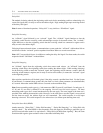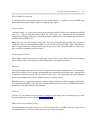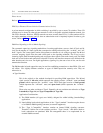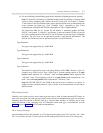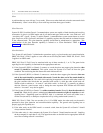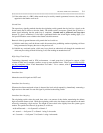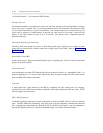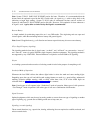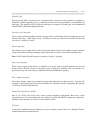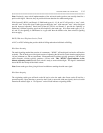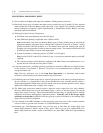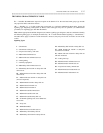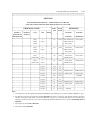C-12 TRUNKING TERMS AND CAPABILITIES
_ ___________________________________________________________________________________________________________________________
_ ___________________________________________________________________________________________________________________________
_ ___________________________________________________________________________________________________________________________
Note: System 75 R1V1 DOES NOT SUPPORT precise dial tone. Therefore, it is recommended that the
distant switch be optioned to provide the R1V1 switch with a dc signal (e.g., a wink or delay-dial) as the
indication to begin digit sending. System 75 R1V2 (plus all subsequent versions) and all versions of
System 85 and Generic 2 DO SUPPORT precise dial tone. However, call completion is faster whenever a
dc signal is used. Again, either a wink or delay-dial signal is recommended.
Reverse Battery
A simple method for performing supervision on 1-way DID trunks. The originating end uses open and
closure signals, while the terminating end uses battery and ground signals.
Note: Some CO applications (e.g., toll-diversion and answer supervision) may also use reverse battery.
SF (or Single Frequency signaling)
The signaling method where the dc signal states ‘‘on-hook’’ and ‘‘off-hook’’ are converted to ‘‘tone-on’’
and ‘‘tone-off’’ states via special 2600-Hz single frequency interface equipment. This signaling method is
not supported by any AT&T PBX. External hardware is required to convert E&M to SF signaling.
Seizure
A switching system action that consists of selecting a trunk circuit for the purpose of completing a call.
Senderized Mode of Operation
Whenever the local PBX collects the address digits before it seizes the trunk and starts sending digits.
Depending upon the type call and which trunk routing features are used (e.g., speed calling, subnetwork
trunking, extension number steering, AAR, or ARS), either three, four, or all of the dialed digits are
collected. Refer to ‘‘Cut-Through Mode of Operation’’ for a contrast.
Note: Certain types of calls operate in the ‘‘Senderized’’ mode of operation. Other types of calls operate as
‘‘Cut-Through’’ mode of operation. Still other types of calls use a combination of both modes.
Signal Converter
Optional equipment, which may be used on analog trunks to convert from one type of signaling to another
type of signaling, e.g., ground-start to E&M, ground-start to loop-start, etc.
Signaling (or trunk signaling)
Those control functions (e.g., supervision, alerting, addressing) that are required to establish, maintain, and
release a trunk circuit.



